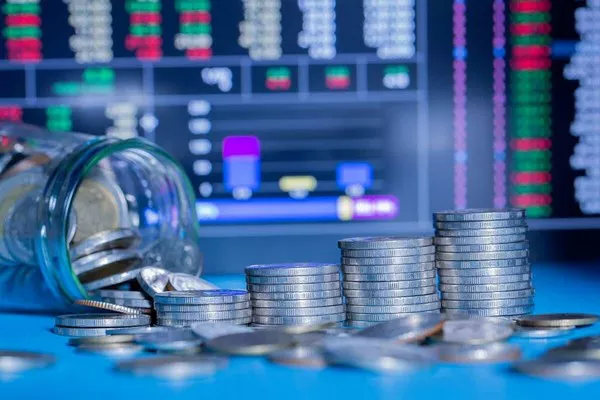Investing money wisely is one of the most crucial decisions anyone can make to secure their financial future. With the ever-changing landscape of global markets, economic indicators, and personal financial goals, determining the optimal time to invest can be both daunting and critical. This article aims to dissect the current financial climate, assess various factors that influence investment timing, and provide practical advice to help you make informed investment decisions.
Understanding the Current Financial Climate
To gauge the best time to invest today, it’s essential to understand the current financial environment. This involves examining economic indicators, market conditions, and geopolitical factors. Presently, the global economy is experiencing a mix of recovery and uncertainty. Inflation rates have been fluctuating, interest rates are adjusting, and supply chain disruptions are impacting various sectors. All these elements contribute to a complex investment landscape.
Economic Indicators and Market Trends
Economic indicators are crucial in determining the right investment strategy. Key indicators include GDP growth, inflation rates, unemployment rates, and interest rates. Currently, many economies are seeing moderate growth after a period of slowdown. Inflation has been a significant concern, with central banks around the world adjusting interest rates to manage price levels.
For instance, if inflation is high, central banks might raise interest rates to control it. Higher interest rates often lead to higher borrowing costs, which can slow down economic growth. Conversely, when interest rates are low, borrowing becomes cheaper, potentially stimulating investment and economic activity. Investors need to stay informed about these trends as they can directly impact investment returns.
Geopolitical Factors and Market Sentiment
Geopolitical events also play a substantial role in investment decisions. Political instability, trade disputes, and international conflicts can create uncertainty in the markets. For example, recent trade tensions between major economies have led to market volatility. It’s important for investors to keep an eye on such developments as they can influence market performance and affect investment outcomes.
Market sentiment, which reflects the overall attitude of investors toward market conditions, can also impact investment timing. A positive sentiment often drives market prices up, while a negative sentiment can lead to declines. Understanding market sentiment can help investors gauge whether it’s a good time to buy or sell.
Long-Term vs. Short-Term Investing
When considering the best time to invest, it’s important to distinguish between long-term and short-term investment strategies. Long-term investing involves holding assets for several years or decades. This approach generally allows investors to ride out market fluctuations and benefit from compound growth. For long-term investors, the timing of investment is less critical compared to the choice of assets and their overall investment strategy.
On the other hand, short-term investing focuses on taking advantage of market fluctuations within shorter time frames, such as months or years. Timing becomes crucial in short-term investing, as investors aim to capitalize on market movements and trends. For short-term investors, staying updated with current market conditions and economic forecasts is essential.
Investment Strategies for Today’s Market
Given the current financial environment, several investment strategies can be considered. Diversification remains a fundamental principle. By spreading investments across various asset classes, such as stocks, bonds, real estate, and commodities, investors can reduce risk and improve potential returns. Diversification helps in mitigating losses if one sector underperforms while others may thrive.
Another strategy is to focus on sectors that show resilience in uncertain times. For instance, technology and healthcare sectors have demonstrated strong performance despite economic fluctuations. Investing in sectors with long-term growth potential can provide stability and opportunities for profit.
see also: How Do You Purchase Treasury Bonds: A Comprehensive Guide
Considerations for Individual Investors
For individual investors, it’s crucial to align investment decisions with personal financial goals and risk tolerance. Assessing your financial situation, including your income, expenses, and investment horizon, can guide your investment choices. If you have a high-risk tolerance and a long investment horizon, you might be more inclined to invest in growth stocks or emerging markets. Conversely, if you prefer lower risk, bonds or dividend-paying stocks might be more suitable.
Additionally, seeking professional advice from financial advisors can provide tailored insights and strategies based on your specific circumstances. Financial advisors can help you navigate complex market conditions and make informed decisions that align with your financial objectives.
Conclusion
In summary, determining the best time to invest money today requires a comprehensive understanding of the current financial climate, economic indicators, market trends, and individual financial goals. While economic and geopolitical factors play significant roles, the timing of investments should also consider long-term vs. short-term strategies and personal risk tolerance.
By staying informed about market conditions, diversifying investments, and aligning choices with personal financial goals, investors can make more informed decisions. Remember, investing is not just about timing the market but also about having a well-thought-out strategy that accommodates your financial needs and objectives.
Ultimately, the best time to invest is when you have a clear understanding of your goals, a strategy in place, and a willingness to navigate the complexities of the market. Investing wisely today can pave the way for a secure and prosperous financial future.


